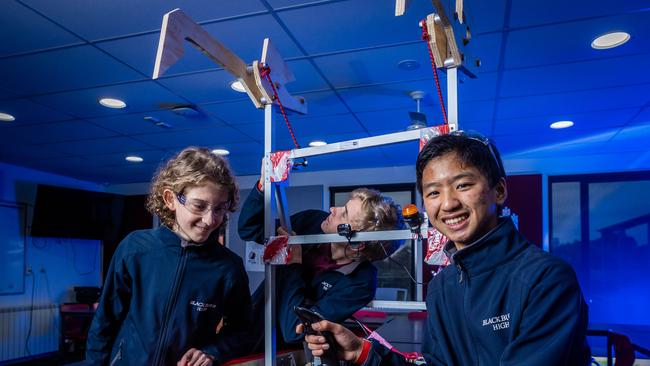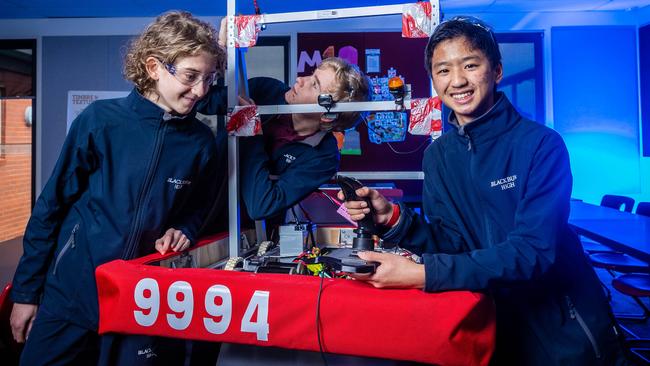Why education experts now want preschoolers to learn coding and play with robots
Education experts want children as young as three to play with robots and start learning coding to prepare for the modern world. Here’s why.

Education
Don't miss out on the headlines from Education. Followed categories will be added to My News.
Kids will have better problem solving and maths skills by the time they start school if they learn how to code and build robots as young as three years old.
Research by the University of New England is exploring the link between learning coding – programming that controls how devices such as phones or robots function – and better preschool kids’ improved performance in pre-maths, algorithms, counting and problem-solving.
Children aged between three and five-years-old could identify various commands that made wooden square robots, known as cubettos, move in different directions by pressing buttons.
They could then take on board explanations from their teachers about why the commands created different movements.
The current Australian curriculum integrates technology skills into learning from grade three.
But researcher and senior early childhood education lecturer Jo Bird said all kids should be playing with robots and screens in preschool because the national guidelines – which recommend kids under two years old not be exposed to screens – were “out of sync” with how much tech was a part of modern life.

She said while screens were also beneficial for learning, introducing coding to younger cohorts showed them how to make technology work without being glued to them.
“It will set the foundations for primary school learning,” she said.
“We get them understanding that there are symbols – letters and numbers – that help children learn how technology works without being glued to screens.
“They won’t necessarily understand full coding, but they’ll learn that by pressing a button forward three times, the robot will move forward three times, so it’s making those links.”
The national curriculum was revamped earlier this year to incorporate coding in younger year levels after the national assessment body found “the need for a greater emphasis on computational thinking in response to the needs and practices of contemporary society”.
Coding was originally introduced to students from Year 7 onwards, with Australian students currently competing in the FIRST national robotics competition, during which pupils design and build a working robot from scratch.
The competition caters for students from years nine to 12, but Emma Love, the STEM teacher at Blackburn High School – the school hosting the competition – said kids wanting to learn coding are “raring to go” before they even start secondary school.
“A couple of them already, you know, kind of had an understanding of engineering and I know when I went through school, I didn’t have that exposure. So yet the kids are definitely coming in keen,” she said.
The school’s robotics team has spent many after school hours bringing a working robot to life by using coding programs such as JavaScript and LabView.
Ms Love said students’ dedication to the project highlighted their ability to problem solve and use engineering in an area of study that is now crucial to a student’s development from a young age.




